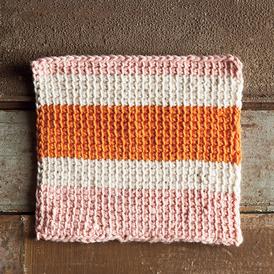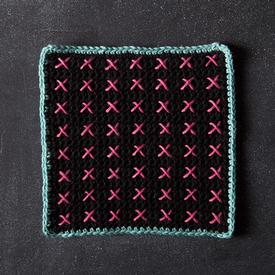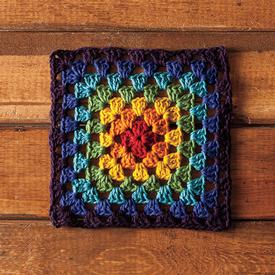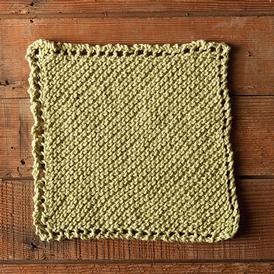Backpacks: How to Choose
Being an Outdoor Guide means that everyone asks you questions. Here are some tips and tricks that you can use!
Heading to the backcountry? Your goal is to find a backpack that fits your:
- Trip length—are you going out for an overnighter or for a week or more?
- Personal style of backpacking—are you more into comfort or weight savings? Is your gear old and bulky or weight- and space-efficient?
- Body type—your torso length, not your height, matters most.
Video: How to Choose a Backpacking Pack
The following is a general guide for which pack sizes (measured in liters) typically work well for backpackers during warm-weather hikes of varying lengths. Colder-weather trips usually require a larger pack, while ultralight backpackers may choose to go smaller than the recommendations here.
Length of trip
|
Pack capacity (liters)
|
Weekend (1–3 nights)
|
35–50
|
Multiday (3–5 nights)
|
50–80
|
Extended (5+ nights)
|
70+
|
Weekend (1–3 nights; 35–50 liters)
Efficient packers using newer, less-bulky gear can really keep things light on 1- to 3-night trips by using a pack in this range. Be aware that packing light requires self-discipline and careful planning. If you can pull it off, though, the light-on-your-feet rewards are fantastic.
Multiday (3–5 nights; 50–80 liters)
These are the most popular backpacking packs sold, and they’re an excellent choice for warm-weather trips lasting 3 or more days. 50–80 liter packs are also used for backcountry skiing, for day trips, overnighters and sometimes 2-night trips.
Extended-trip (5+ nights; 70 liters or larger)
Extended trips of 5 days or more usually call for packs of 70 liters or larger. These are also usually the preferred choice for:
- Winter treks lasting more than 1 night. Larger packs can more comfortably accommodate extra clothing, a warmer sleeping bag and a 4-season tent (which typically includes extra poles).
- Adults taking young children backpacking. Mom and Dad wind up carrying a lot of kids’ gear to make the experience enjoyable for their young ones.
Climbing Packs
Most have modest capacities that are appropriate only for day trips or overnighters. Common features include:
- The ability to strip down the pack to its minimal weight (removing the lid, framesheet and possibly the hipbelt) for use during a summit push.
- A narrower, sleeker, sometimes higher profile than a usual packbag, permitting unencumbered arm movement.
- Several lash-on points for external tool attachment.
- A daisy chain—a length of webbing stitched to the outside of a pack—to provide multiple gear loops for attaching a helmet or tools.
- A reinforced crampon patch (to prevent crampon points from gouging holes in the packbag).
- Gear loops on the hipbelt or low on the pack body, useful as clip-on points for gear or possibly as attachment points for skis.
The right fit is one that offers:
- A size appropriate for your torso length (not your overall height).
- A comfortably snug grip on your hips.
Torso Length
Some packs are available in multiple sizes, from extra small to large, which fit a range of torso lengths. These ranges vary by manufacturer and by gender. Check the product specs tab for size details of a specific pack.
Other packs may feature an adjustable suspension, which can be modified to fit your torso, especially if you’re in between sizes. The drawback: An adjustable harness adds a little weight to a pack.
Waist Size
The majority of a backpack’s weight, 80% or more, should be supported by your hips.
Backpack hipbelts usually accommodate a wide range of hip sizes, from the mid-20 inches to the mid-40 inches.
People with narrow waists sometimes find they cannot make a standard hipbelt tight enough and need a smaller size. Some packs offer interchangeable hipbelts, making it possible to swap out one size for another.
Women-Specific Backpacks
These are engineered specifically to conform to the female frame. Torso dimensions are generally shorter and narrower than men’s packs. And hipbelts and shoulder straps are contoured with the female form in mind.
Youth-Specific Backpacks
These typically offer smaller capacities and include an adjustable suspension to accommodate a child’s growth. Women’s backpacks, with their smaller frame sizes, often work well for young backpackers of either gender. So do small versions of some men’s packs.
Additional Backpack Fit Adjustments
Load lifter straps are stitched into the top of the shoulder straps, and they connect to the top of the pack frame. Ideally, they will form a 45° angle between your shoulder straps and the pack. Kept snug (but not too tight), they prevent the upper portion of a pack from pulling away from your body, which would cause the pack to sag on your lumbar region.
Sternum strap: This mid-chest strap allows you to connect your shoulder straps, which can boost your stability. It can be useful to do so when traveling on uneven cross-country terrain where an awkward move could cause your pack to shift abruptly and throw you off-balance.
Internal-frame backpacks: The majority of packs sold today are body-hugging internal frame packs that are designed to keep a hiker stable on uneven, off-trail terrain. They may incorporate a variety of load-support technologies that all function to transfer the load to the hips.
External-frame backpacks: An external-frame pack may be an appropriate choice if you’re carrying a heavy, irregular load. Toting an inflatable kayak to the lake or heading out to the backcountry with surveying tools? An external frame pack will serve you best. External frame packs also offer good ventilation and lots of gear organization options.
Frameless backpacks: Ultralight devotees who like to hike fast and light might choose a frameless pack or a climbing pack where the frame is removable for weight savings.
Main compartment access:
- Top-loading openings are pretty standard. Items not needed until the end of the day go deep inside.
- Some packs also offer a zippered front panel that folds open exposing the full interior of the pack, or a side zipper, which also makes it easier to reach items deeper in your pack.
Sleeping bag compartment: This is a zippered stash spot near the bottom of a pack. It’s a useful feature if you don’t want to use a stuff sack for your sleeping bag. Alternately, this space can hold other gear that you’d like to reach easily.
Top lid: Many packs offer a zippered top lid where most backpackers store quick-access items: sunscreen, insect repellent, camera, snacks, map. Some lids detach from the main pack and convert into a hipbelt pack for day trips.
Pockets: Typical offerings:
- Elasticized side pockets: They lie flat when empty, but stretch out to hold a water bottle, tent poles or other loose objects.
- Hipbelt pockets: These accommodate small items you want to reach quickly—a smartphone, snacks, packets of energy gel, etc.
- Shovel pockets: These are basically flaps stitched onto the front of a packbag with a buckle closure at the top. Originally intended to hold a snow shovel, they now pop up on many 3-season packs, serving as stash spots for a map, jacket or other loose, lightweight items.
- Front pocket(s): Sometimes added to the exterior of a shovel pocket, these can hold smaller, less bulky items.
Ventilation: This can be a drawback of internal-frame designs. Much of the pack rides on your back, cutting airflow and accelerating sweaty-back syndrome. Designers have addressed this in a variety of ways—ventilation "chimneys" built into back panels, for example.
A few packs have engineered a suspended mesh back panel, sometimes called "tension-mesh suspension." This is a trampoline-like design where the frame-supported packbag rides along a few inches away from your back, which instead rests against the highly breathable mesh.
Padding: If you’re using a lightweight pack with a fairly minimalistic hipbelt and lumbar pad, you can encounter sore spots on your hips and lower back. If this is the case for you, consider using a cushier hipbelt.
Attachment points: If you frequently travel with an ice axe or trekking poles, look for tool loops that allow you to attach them to the exterior of the pack. Rare is the pack that does not offer at least a pair of tool loops.
Backpack Accessories
Raincover: Pack fabric interiors are usually treated with a waterproof coating. Yet packs have seams and zippers where water can seep through, and the fabric’s exterior absorbs some water weight during a downpour.
The solution is a raincover, which could be a plastic garbage bag (cheap but clumsy) to a more customized packcover. If you expect rain on your trip, this is a good item to carry. An alternative: bundling gear internally in waterproof “dry” stuff sacks. Lightweight dry sacks can be a better option in windy conditions; strong gusts have the potential to abruptly peel a cover right off a pack.
Hydration reservoir: Nearly all packs offer an internal sleeve into which you can slip a hydration reservoir (almost always sold separately) plus 1 or 2 "hose portals" through which you can slip the sip tube.
Article and others like it found at REI.com








